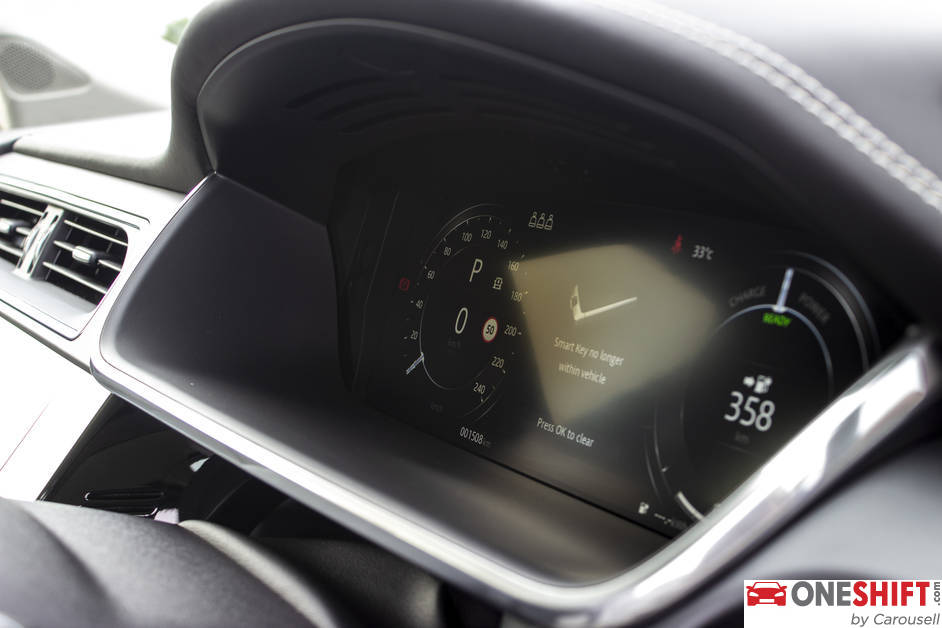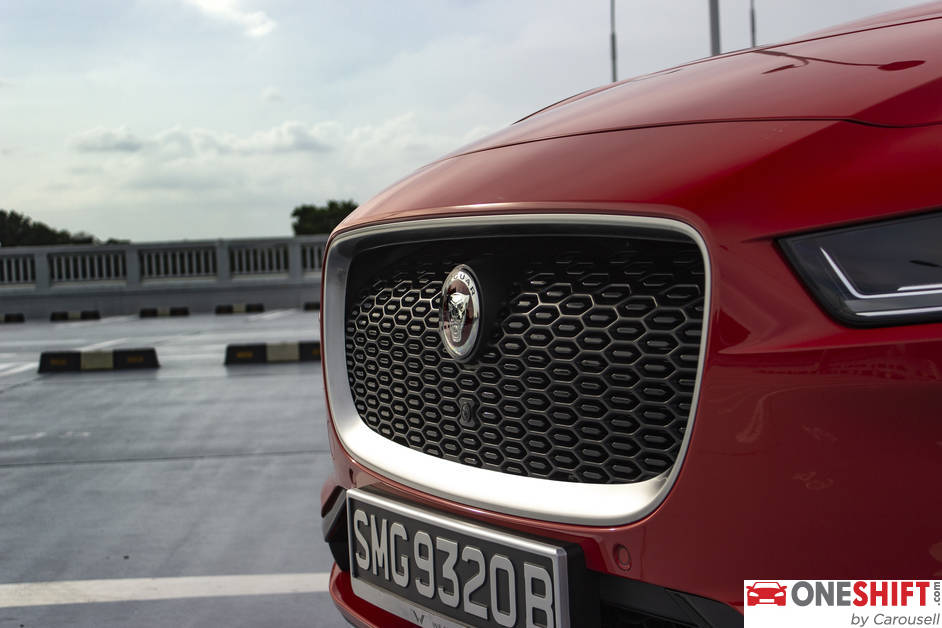Growler Got A Leaper
Back in February, we took a drive up to KL to see how the I-Pace fared on a single charge. The car made it to our destination, although our doubt was heavily governed by how much range we had left. To complicate matters, my heavy left foot was not helping with the situation, prompting those in the car with me to take measures to ensure that we could make it to our hotel with what juice that remained. Measures taken involved removing me from the driver’s seat (short of tying me up), to shutting off the air-conditioning.


Back in February, we took a drive up to KL to see how the I-Pace fared on a single charge. The car made it to our destination, although our doubt was heavily governed by how much range we had left.
To complicate matters, my heavy left foot was not helping with the situation, prompting those in the car with me to take measures to ensure that we could make it to our hotel with what juice that remained. Measures taken involved removing me from the driver’s seat (short of tying me up), to shutting off the air-conditioning.

We made it with around 35km in equivalence of juice left… with sweat running down the sides of our heads, and slightly grumpy. But then again, we were attempting to push the car closer to its range limits.
Back in Singapore, we bring it out for something a little more realistic.

Jaguar’s first attempt at building an EV (Electric Vehicle) is truly an impressive feat on its own. The Austrian-built EV stores its juice utilising a state-of-the-art 90kWh Lithium-ion battery which contains 432 pouch cells, and Jaguar says that will deliver a range of 470km. Then again, with the kind of start-stop situations you will find yourself in over here, you can expect those numbers to be within the late 300s.

Since the batteries are heavy components, there is a need to store them low in the car, and to keep the car balanced, hence the I-Pace’s long 2,990 wheelbase, and stubby overhangs. Marketed as an SUV, the I-Pace however, does not seem to truly fit into any conventional design mold, and the loosely-used ‘Crossover’ term in this case, would be so apt.

Our test car is the more luxuriously appointed ‘First Edition’ model, which features larger 22” rims with some fancy carbon inserts. The ‘HSE’ trim variant, uses smaller 20” units.
Our test car features optional bucket-style seats, which if you ask me, are a little bit of an oversell of its sporting aspirations, however we do like that they do offer cooling to our precious behinds.

We must say that there is a well-crafted interplay of materials; and since this is not a fossil fuel-burning car to begin with, there can also be more freedom in planning where switchgear is placed. The lack of exhaust pipes, driveshafts, a transmission and even the engine, makes the I-Pace quite the easy canvas to work with within its interior. Even with the I-Pace’s coupe-like sloping roofline, passengers at the rear still get a considerable amount of headroom, (968mm) thanks to its low-slung seating position. Its long wheelbase also contributes to plenty of legroom for both front and rear occupants.

A solar attenuating glass roof allows additional light into the cabin. While it has infrared absorbing properties, there is no electric closing blind, and it still does allow some heat to enter the cabin on extremely hot days (this was evident, especially since we shut the air-conditioning off during our trip to KL).

The I-Pace is Jaguar’s first car to utilise the Touch Pro Duo infotainment system, featuring two touchscreen displays on the centre console. A combination of capacitive sensors and tactile physical controls, like the two rotary controllers, makes the system quite user friendly.
Behind the wheel, a 12” Interactive Driver Display provides drive information, and is further complemented by a full-colour windscreen-projected head-up display (HUD).

As pretty as the interior is, there is also a practical side, with a massive 10.5 litre compartment in the centre console, while trays under the rear seats offer ideal hiding places for notebooks and tablets. The Secondary Boot In the Front (SBIF)... ok I coined that one, stores another 27 litres; while rear luggage capacity is generous at 656 litres, and can be increased to 1,453 litres with the 60:40 style rear seats folded.

Power from its 90kWh battery drives two motors, one at the front and another at the rear, for a total of 400ps and 696Nm. Acceleration is brisk, especially for the initial bit. The I-Pace hits 100km/h in 4.8 seconds, easily leaving pretty much all of the traffic behind at the lights.

Within the cabin, there is a surreal sense of stillness from a lack of intruding noise, as you watch the world whisk by. I could swear, without that steering in the way, you could savour a cup of tea poured from a pot… Then again, that could be a reality within the near future.

The First-Edition car is equipped with an Active Air Suspension and Adaptive Dynamics, which offers up improved comfort for our drive. The air suspension system lowers the I-Pace by 10mm for improved stability when travelling at speeds above 105km/h. Lane changes at speed reveals a good deal of stability, thanks to the low centre of gravity of its battery, and 50:50 weight distribution.
Sadly, those fancy 22” rims are not the best thing to have as initial absorption from bumps on the road, the 20” ones, supplied on the HSE model are actually a better match we feel.

The brakes too, leave you with much to be desired during hard braking situations. There is quite a bit of travel when depressing the pedal; and this is after maxing out on the brakes (which do not do much in slowing the car down more); and to complicate things, you need to go through a few steps in the user interface to call up the Regenerative Braking adjustment slider.

Surprisingly, Korean brands Hyundai for their Ioniq and Kona EVs and Kia for its Niro have worked out a better way to do this; by way of pedal shifters behind the steering wheel, which allows you to regulate the ‘regen’ on the go. “Engine braking” the car if an emergency arises is just a flick away.
One of the key considerations apart from price for adoption of new technologies (in this case, something which is very central to our lives), is that they would lead to greater benefits for those who have taken the leap; or at least not negatively impact their current day-to-day routines.

While the I-Pace (First Edition will set you back $372,999* and the HSE model at $349,999*) carry on them “first adopter” price tags, they do offer more-than-practical mileage.
Speaking about mileage, it is cheap to run, compared to the average car. On our tiny island, I would estimate that the car would need charging once every four days. Electricity (at least for now) is much cheaper than petrol, and you would be able to ply the roads for an entire month, with a fraction of the cost it will be to fill the tank on a similarly-sized (and/or priced) car.

And since there is no engine to service, if all goes well, you’d see your dealership once in two years for all the other bits that needs some TLC.
Sure.. sure, it takes approximately 12 hours to charge the battery from zero, but you do need to sleep don’t you?

*Prices accurate as at 2 July 2019
Credits:








Get the Best Price for your used car
from 500+ dealers in 24 hours

- Convenient and Hassle-Free
- Consumer Protection
Transparent Process
With No Obligation








